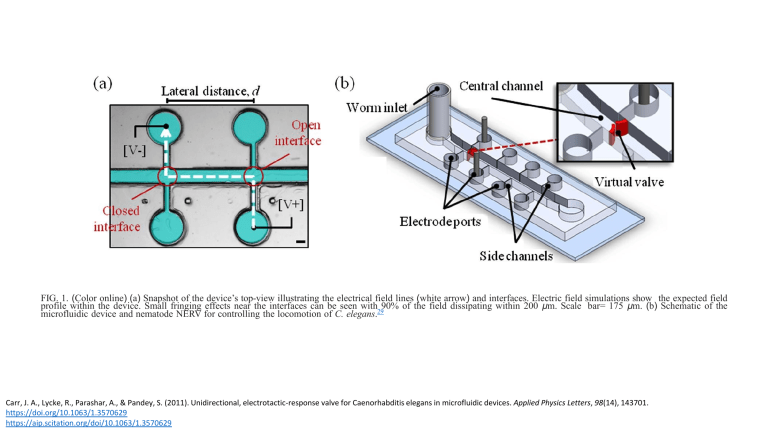
FIG. 1. (Color online) (a) Snapshot of the device’s top-view illustrating the electrical field lines (white arrow) and interfaces. Electric field simulations show the expected field
profile within the device. Small fringing effects near the interfaces can be seen with2990% of the field dissipating within 200 µm. Scale bar= 175 µm. (b) Schematic of the
microfluidic device and nematode NERV for controlling the locomotion of C. elegans.
Carr, J. A., Lycke, R., Parashar, A., & Pandey, S. (2011). Unidirectional, electrotactic-response valve for Caenorhabditis elegans in microfluidic devices. Applied Physics Letters, 98(14), 143701.
https://doi.org/10.1063/1.3570629
https://aip.scitation.org/doi/10.1063/1.3570629
FIG. 2. (Color online) Time-lapsed images of single N2 C. elegans encountering the closed interface of the NERV. A worm, moving from an area of little or no
electric field, is incident on the closed interface of the NERV. After probing the lateral E-field region, the worm penetrates to some depth, retracts and turns around; thus a
virtual wall is formed at the closed interface. Scale bar= 150 µm
Carr, J. A., Lycke, R., Parashar, A., & Pandey, S. (2011). Unidirectional, electrotactic-response valve for Caenorhabditis elegans in microfluidic devices. Applied Physics Letters, 98(14), 143701.
https://doi.org/10.1063/1.3570629
https://aip.scitation.org/doi/10.1063/1.3570629
FIG. 3. (a) Percentage of C. elegans (n=21) blocked at the closed interface for each of the three days (i.e., N= 1, N= 2, and N= 3) [mean± standard error of the mean (SEM)].
No significant difference (p> 0.5) was found among the strains. (b) Penetration depth into the closed interface of the NERV for the three strains (mean± SEM). No
significant difference (p>0.05) was found.
Carr, J. A., Lycke, R., Parashar, A., & Pandey, S. (2011). Unidirectional, electrotactic-response valve for Caenorhabditis elegans in microfluidic devices. Applied Physics Letters, 98(14), 143701.
https://doi.org/10.1063/1.3570629
https://aip.scitation.org/doi/10.1063/1.3570629








